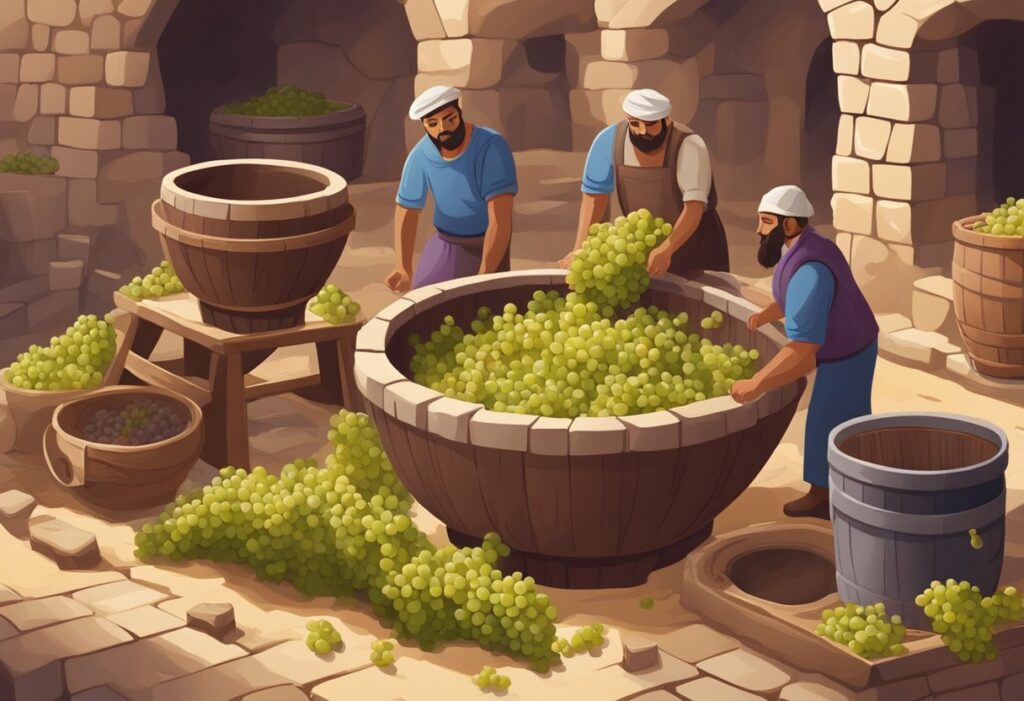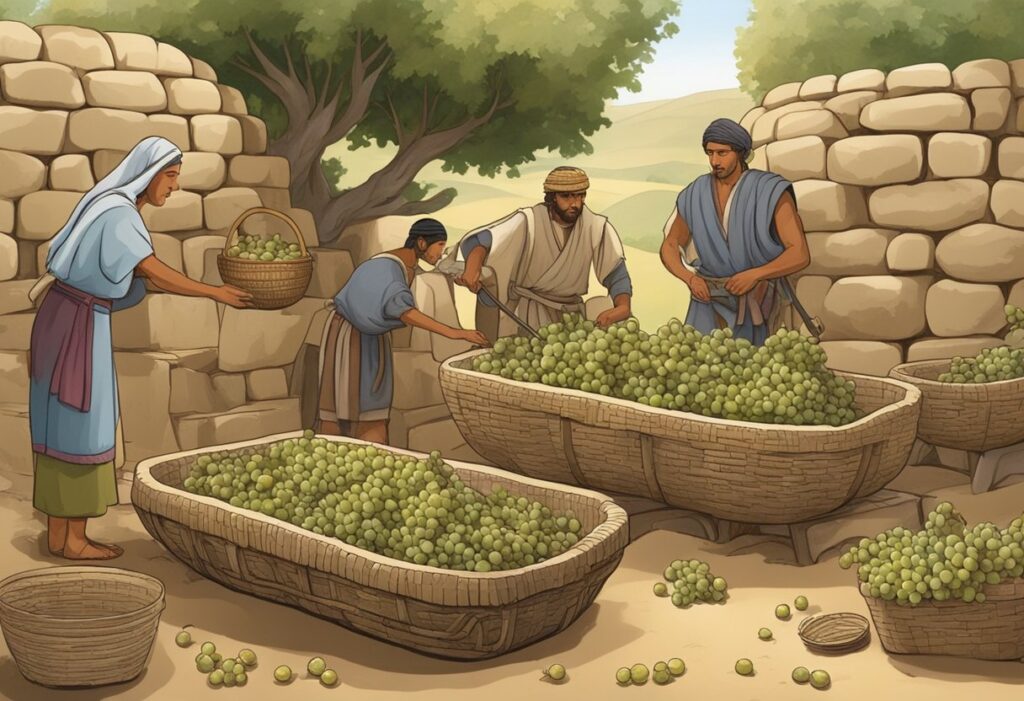Wine has been woven into the fabric of human celebration for thousands of years. From weddings to village festivals, wine represents love, joy, and unity. These special occasions are often marked by specific wine traditions that are as diverse and colorful as the cultures they originate from.
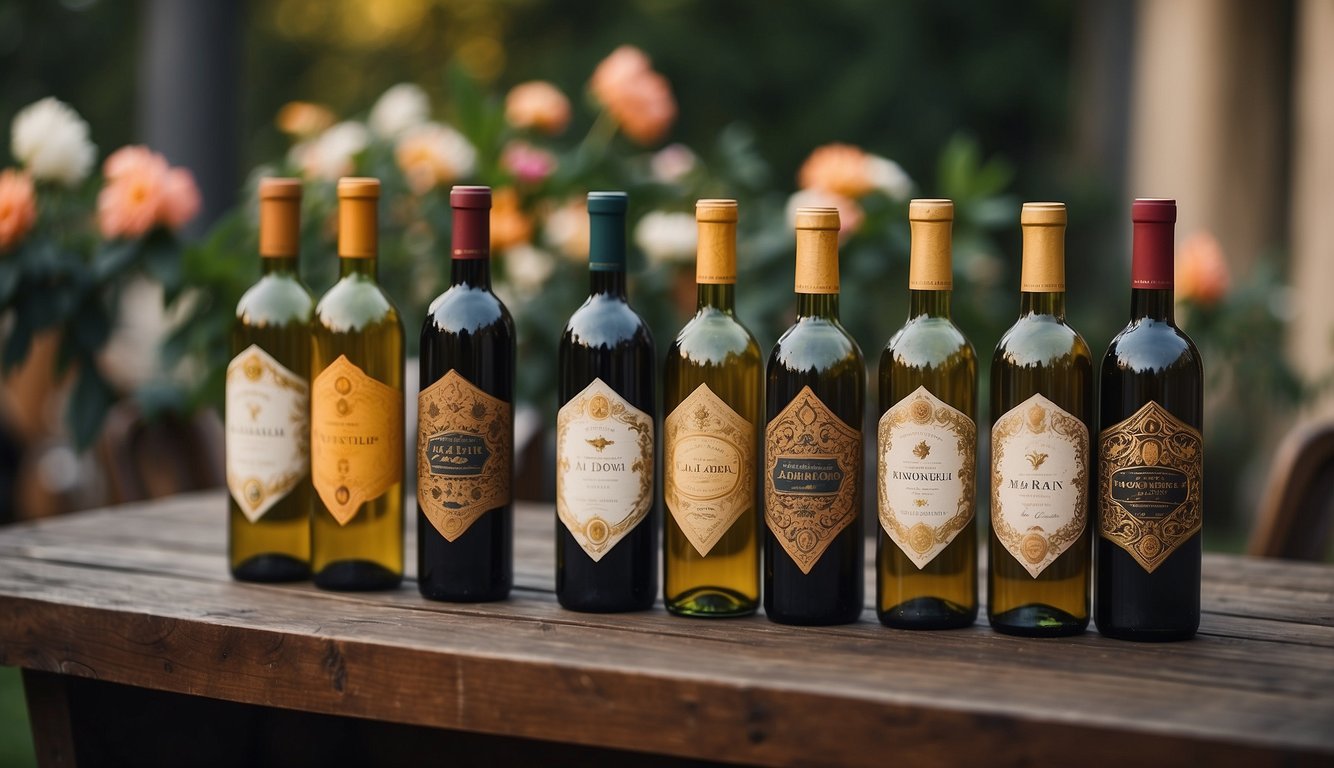
In weddings, wine ceremonies like the blending of wines symbolize the merging of two lives. This act of combining red and white wine into one carafe represents the joining of two hearts, making every sip a reminder of the commitment and love shared between partners. Wine ceremonies at weddings are not only symbolic but also a cherished tradition that brings families together.
Festivals are another realm where wine shines brightly. Across different regions, such as the charming wine festivals in Rhineland-Palatinate, communities gather to celebrate their local wine harvest with gusto. These events, filled with music, dance, and of course, wine tasting, highlight the joy and communal spirit that wine brings.
The Role of Wine in Weddings and Celebrations
Wine has a rich tradition in weddings and celebrations. It symbolizes unity and is often part of several customs that mark these important events. Below, you’ll find insights into its symbolic meanings as well as specific traditions associated with wine.
Symbolism and Significance
Wine plays a crucial role in the symbolic elements of weddings. During ceremonies, shared wine often represents the blending of two lives and the joining of two families. This act speaks to the unity and mutual commitment that a couple makes.
Vows exchanged often involve wine to signify a pledge to support each other. The mutual sipping of wine during a wine ceremony reflects their shared life ahead. The rings exchanged are symbols of eternity, similar to how wine can signify eternal love and continuity.
Customs and Traditions
Wine is deeply embedded in many wedding customs and traditions. At weddings, you might witness the wine ceremony, where the couple drinks from a shared glass. This symbolizes unity. In some traditions, wine is also poured into a single cup from two separate bottles, showing the blending of lives.
Toasting is another popular practice. The newlyweds and guests raise their glasses to share good wishes. Various cultures also include special wine-related rituals. For instance, at Jewish weddings, couples sip wine during the ketubah signing, a reflection of joy and celebration.
In weddings across different cultures, wine enhances the joy and symbolic significance of the wedding day, binding traditions together. These traditions bring a sense of continuity and historical connection to modern celebrations.
Choosing the Perfect Wine for the Occasion
Selecting the right wine for events like weddings and festivals can be challenging. Focus on flavor profiles, budget, and the importance of wine tasting to make the best choice.
Flavor Profiles and Sweetness Levels
When choosing a wine, consider flavors and sweetness levels. Wines range from sweet to very dry. Sweet wines, like Riesling and Moscato, are excellent for those who prefer a sugary taste.
Dry wines like Cabernet Sauvignon and Merlot offer complex flavors with less sweetness. For those seeking a balance, semi-sweet wines such as Pinot Gris or Chenin Blanc can be ideal. Tannins play a role too. Wines rich in tannins, like Tempranillo, pair well with richer dishes, making them suitable for lavish celebrations.
Budget Considerations and Selection Process
Your budget greatly impacts your selection process. High-quality wines can be found in various price ranges. Setting a budget helps narrow down options, ensuring you stay within financial limits.
When selecting, consider wines from renowned regions like Napa Valley, Bordeaux, or Tuscany, ensuring quality. Look for labels such as AOC or DOCG that guarantee quality standards. Always read reviews and possibly consult a wine expert to find the best choices within your budget.
The Significance of Wine Tasting
Wine tasting is crucial when selecting the perfect wine. Sampling different wines allows you to understand their unique profiles and confirms your choice. A tasting experience can reveal the balance and complexity of the wine and its suitability for your event.
A professional wine tasting session can provide insights into flavors, aromas, and textures. Pay close attention to how the wine feels in your mouth and how it pairs with food. Tasting helps ensure that the wine complements the occasion perfectly, adding a special touch to your celebration.
Choosing the perfect wine involves considering flavor profiles, balancing your budget, and appreciating the importance of wine tasting. This thorough approach guarantees a delightful wine experience for your special occasion.
Historical Vintages and Celebratory Varieties
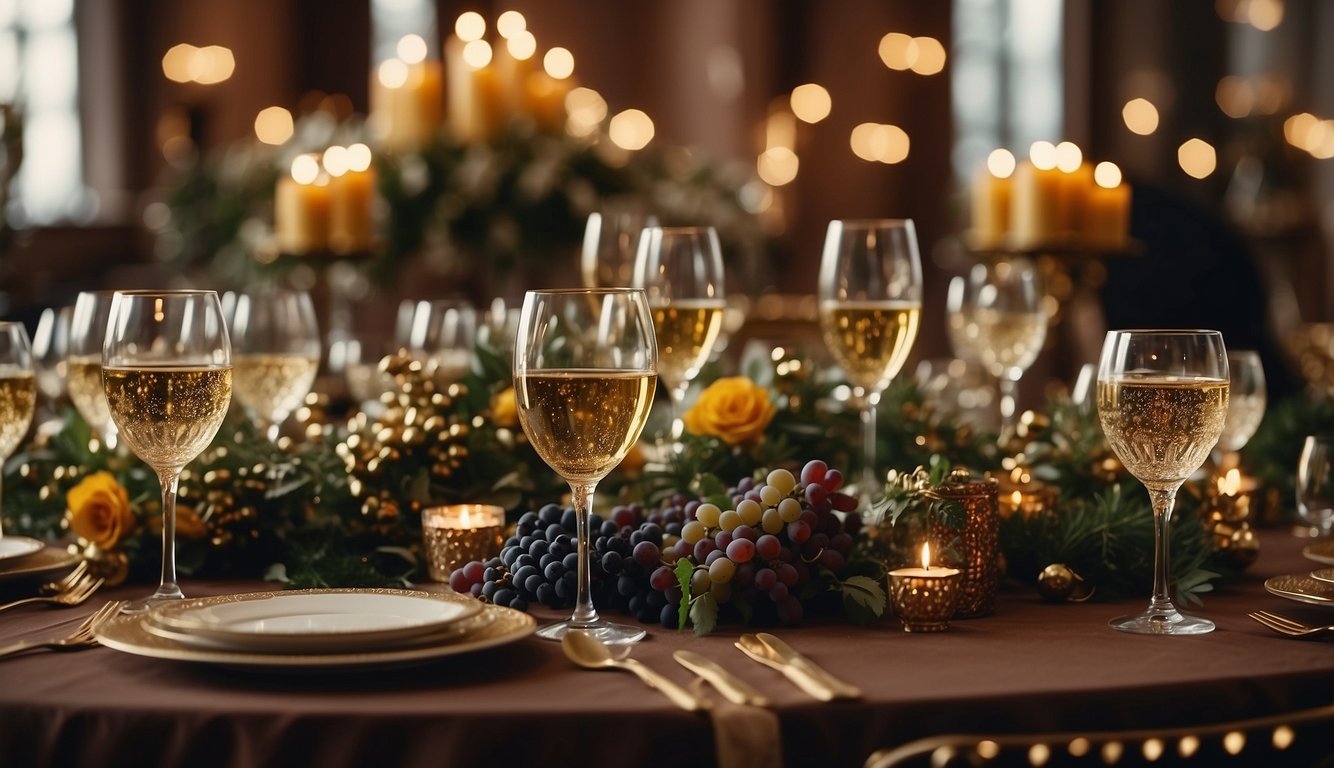
Wine has played an essential role in celebrations throughout history, enriching weddings and festivals with a variety of distinguished vintages and types. From effervescent champagne to bold red wines, each has its own story and significance.
Champagne and Sparkling Wine
Champagne is synonymous with celebration. Originating from the Champagne region in France, this sparkling wine has graced wedding toasts and grand festivities for centuries. There are different styles of champagne, such as Brut, Demi-sec, and Sec, each offering a distinct level of sweetness.
Prosecco is another popular sparkling wine, often chosen for its light and fruity profile. It’s produced in the Veneto region of Italy and is ideal for joyous occasions. Spanish Cava, known for its crisp and fresh taste, serves as another delightful option for celebratory events.
Sparkling wine in general, whether it’s from France, Italy, or Spain, has a unique way of elevating the mood of any gathering. You might find it paired with appetizers, seafood, or even desserts, making it a versatile choice for various points in your celebration.
Notable Red and White Wines
Red wine has long been a staple at celebrations. Pinot Noir stands out for its elegance and is often served at weddings and formal gatherings. Its light to medium body and complex flavors make it a favorite. For those who enjoy fuller-bodied wines, options like Cabernet Sauvignon or Merlot add richness to any celebration.
In the realm of white wine, Chardonnay is a favorite, known for its wide range of styles from buttery and oaky to crisp and unoaked. Riesling, often enjoyed for its sweet and aromatic qualities, can be found at many festive tables. Both complement a variety of dishes, from hors d’oeuvres to the main course.
These notable varietals, whether red or white, are chosen for their ability to pair well with food and bring out the best in culinary experiences. Moreover, they often hold a place of honor in the historical tapestry of celebrations, continuing to bring joy and sophistication to modern events.
Wine in Ritual and Ceremony
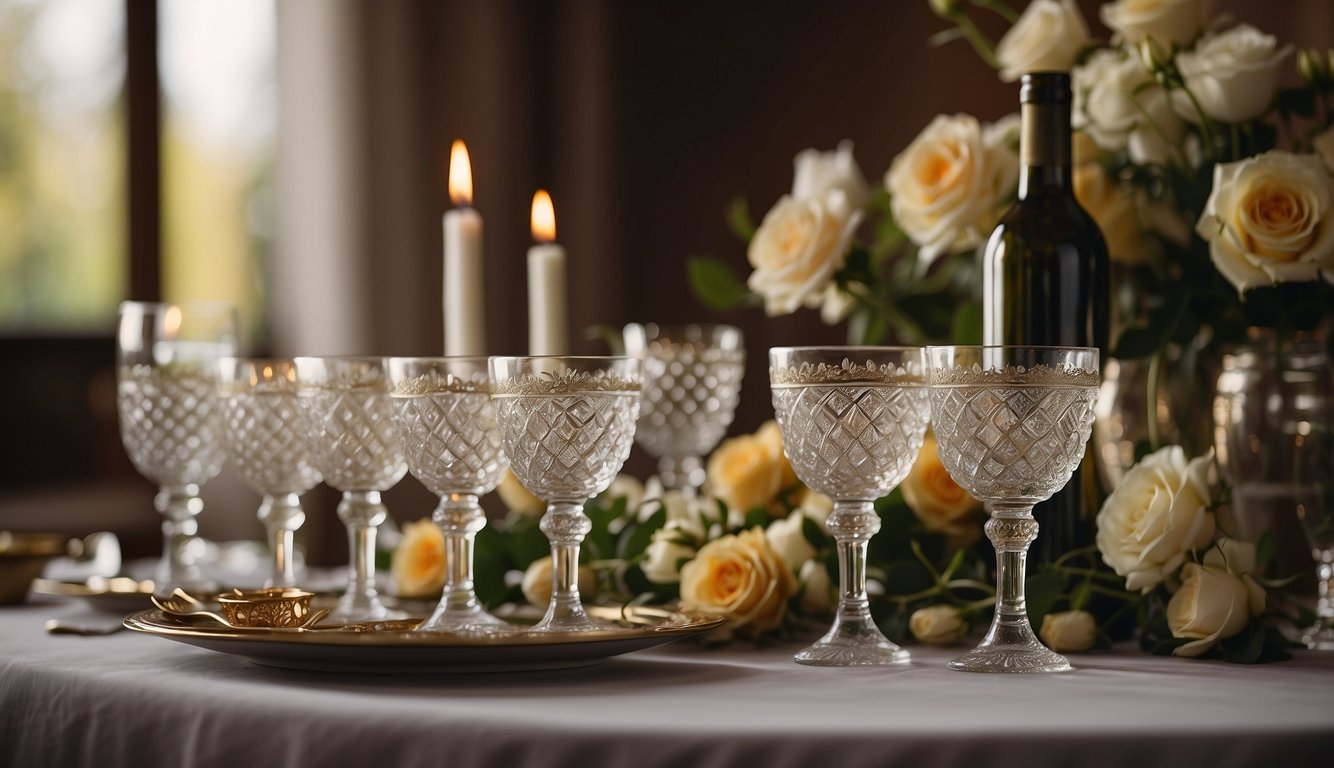
Wine has been part of rituals and ceremonies since ancient times. It often symbolizes unity, love, and celebration. This section explores how wine plays a role in modern wedding ceremonies and its historical and cultural significance.
Modern Wedding Wine Ceremonies
In modern weddings, wine is often used to represent unity and love. An example is the wine ceremony, where the bride and groom pour wine from two glasses into a larger empty carafe, symbolizing their lives merging together. This act highlights the idea of two becoming one.
Another popular practice is the personalized toast. Here, the celebrant or a family member offers a toast using a wine with personal significance to the couple. This kind of toast creates a memorable moment, bringing joy and a sense of togetherness.
Some couples use traditional items like the loving cup or coupe de mariage. The loving cup, often passed among family and friends, symbolizes sharing and community. These elements add depth and tradition to the wedding, creating lasting memories for everyone involved.
Historical and Cultural Practices
Historically, wine has deep roots in ritual practices. In ancient Greece, the god Dionysus was central to many celebrations involving wine, symbolizing joy and chaos. Festivals like Anthesteria celebrated the coming of spring with wine rituals, marking renewal and rebirth.
In various cultures, wine also symbolized prosperity and divine connection. The quaich, a special cup used in Scottish ceremonies, symbolizes friendship and unity. Sharing wine from a quaich during ceremonies strengthens bonds and connection among participants.
In many African cultures, wine rings are exchanged in ceremonies, which symbolize eternal love and commitment. These practices highlight how wine is woven into the cultural fabric, adding layers of meaning to various rituals and ceremonies across the world.
These historical and cultural practices continue to influence modern-day ceremonies, showing how traditions evolve while retaining their symbolic essence.
Wine Festivals and Communal Celebrations
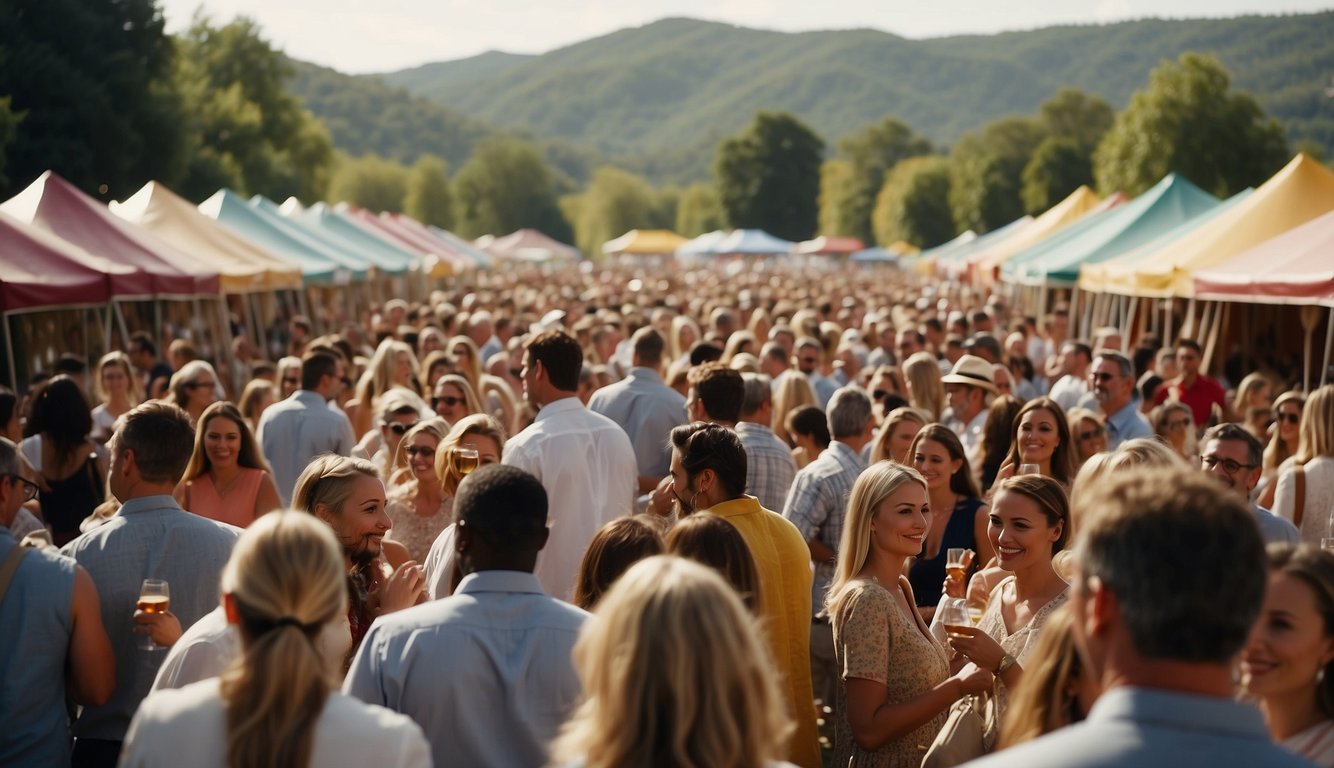
Wine festivals are cherished occasions blending regional pride, joy, and tradition. These events often feature live music, local vendors, and a communal spirit, creating memorable experiences for visitors.
Local and Global Festivities
Across the globe, wine festivals bring communities together. Napa Valley, renowned for its vast vineyards, hosts numerous festivals celebrating its rich wine heritage. In New York, the Finger Lakes Wine Festival showcases over 90 wineries, offering wine tastings and seminars.
Internationally, you can find wine festivals like Germany’s Oktoberfest, which includes local wines alongside its famous beers. These events celebrate not only the wines but also the cultures and traditions of their regions.
Music, Entertainment, and Wine Pairings
Wine festivals are known for their live music and entertainment. Performing artists from local bands to well-known musicians often grace the stages, creating a lively atmosphere. For example, the Hiawassee Highlands Wine Festival in Georgia offers live music on multiple stages, making it a dynamic event.
Wine pairings with food are also a highlight. Attendees can enjoy regional cuisines that complement different wines, enhancing the tasting experience. Some events even include cooking demonstrations and workshops, providing a comprehensive culinary delight that pairs perfectly with the wines being showcased.
